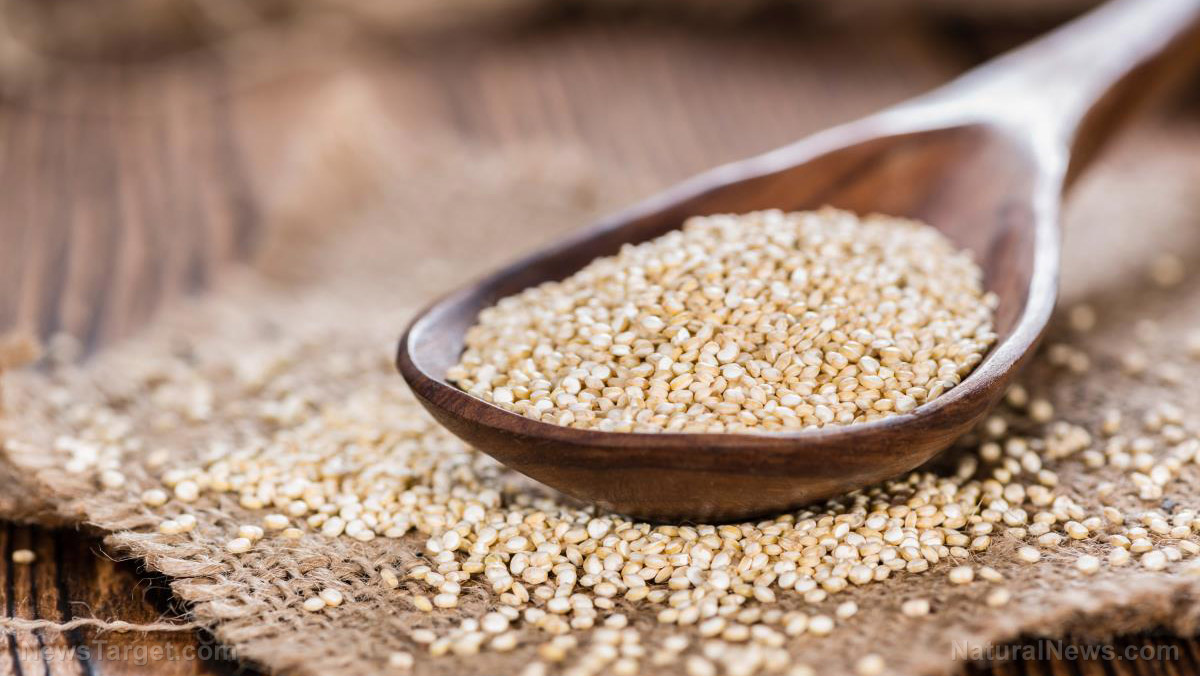Prepper food: 12 Ways to use freeze-dried pineapples
07/15/2021 / By Divina Ramirez

Pineapples are one of the most popular tropical fruits in the United States. Unfortunately, fresh pineapples can be difficult to come by because they don’t thrive in colder temperatures.
Luckily, most health food stores now carry freeze-dried pineapples. Freeze-drying is a fairly modern method of food preservation that removes moisture without affecting the nutrient content of the fruit or vegetable. Freeze-dried foods also maintain their original shape, texture and color prior to freeze-drying.
Because of these characteristics, freeze-dried foods have become popular within prepper circles in recent years. Read on to learn about freeze-drying pineapples and incorporating them into your daily routine.
How to freeze-dry pineapples
Pineapple is rich in vitamins and antioxidants, such as vitamin C, manganese and copper. It also contains bromelain, an enzyme that helps you digest protein.
To prepare a pineapple for freeze-drying, start by slicing off the top to remove the spikey leaves. Slice off the bottom as well. You can then work your way around the fruit, removing the peel in short, clean slices.
Pineapple takes a while to freeze-dry because it’s packed with natural sugars and water. For faster freeze-drying, cut the peeled pineapple into small, equal-sized pieces. Load them onto the freeze-dryer.
Take note that freeze-drying typically takes between 20 to 40 hours, depending on the size and type of the food being freeze-dried. You’ll know the pineapple chunks are done if there is no moisture at all in the very center of each chunk. If it’s still moist, continue freeze-drying for a few more hours.
Store the freeze-dried pineapple chunks in an airtight container or a mylar bag. You can use them as-is but you can also rehydrate them by soaking them in water for 30 minutes. Just don’t use too much water so as to not dilute the flavor of the pineapple.
How to use freeze-dried pineapples
Here are 12 ways you can incorporate freeze-dried pineapples into your daily routine:
- Eat them as-is for a sugar-free treat
- Mix them with cookie batter
- Use them in a sweet and sour sauce for a chicken dish
- Make a stir-fried dish with freeze-dried pineapples, chicken and cashews
- Make a nutritious snack mix with freeze-dried pineapples, nuts and dried fruits
- Mix them with bread batter
- Crush and sprinkle them over muffins and cakes
- Toss them into a tropical fruit punch
- Stir them into cocktails
- Toss them into vegetable salads
- Blend them with other tropical fruits to make a smoothie
- Use them in place of fresh or canned pineapples
Simple recipe for pineapple banana bread
Freeze-dried pineapple isn’t just for food stockpiles or snack time. It also makes for a flavorful ingredient in this recipe for pineapple banana bread.
Ingredients:
- 1 cup mashed bananas
- 3/4 cup coconut sugar
- 1/2 cup whole-grain flour
- 1/2 cup unsalted butter, melted
- 1/2 cup shredded unsweetened coconut
- 1/8 cup freeze-dried pineapples
- 1 teaspoon vanilla extract
- 1/2 teaspoon baking powder
- 1/4 teaspoon salt
- 2 large eggs
Preparation:
- Pulse the freeze-dried pineapples in a food processor or blender until it resembles flour.
- In a bowl, combine the whole-grain flour, pulverized freeze-dried pineapples, salt and baking powder.
- In another bowl, mix the melted butter and sugar, then add the eggs, bananas and vanilla extract.
- Pour the wet mixture into the flour mixture and mix, then add the shredded coconut.
- Pour the batter into a greased loaf pan. Bake at around 320 degrees Fahrenheit for 55–60 minutes.
- Let the bread rest in the pan for 10 minutes before placing it on a wire rack to cool.
Freeze-dryers can cost upwards of $2,000. But it’s a worthy investment if you grow your own food because you can make the most out of your fruits and vegetables. Freeze-dried foods also tend to be more expensive than fresh, canned or dehydrated foods. By freeze-drying foods yourself, you could save money in the long run.
Follow the guide above to make a batch of freeze-dried pineapples for your emergency food stockpile. (Related: Food rotation is important if you have freeze-dried or dehydrated foods in your stockpile.)
FoodStorage.news has more articles about freeze-dried foods and other stockpile essentials.
Sources include:
Tagged Under: emergency food, Food storage, freeze-dried pineapples, homesteading, off grid, pineapples, preparedness, prepper, prepping, prepping tips, recipes, SHTF, survival, survival food, Survival Tips
RECENT NEWS & ARTICLES
FoodStorage.News is a fact-based public education website published by Food Storage News Features, LLC.
All content copyright © 2018 by Food Storage News Features, LLC.
Contact Us with Tips or Corrections
All trademarks, registered trademarks and servicemarks mentioned on this site are the property of their respective owners.





















